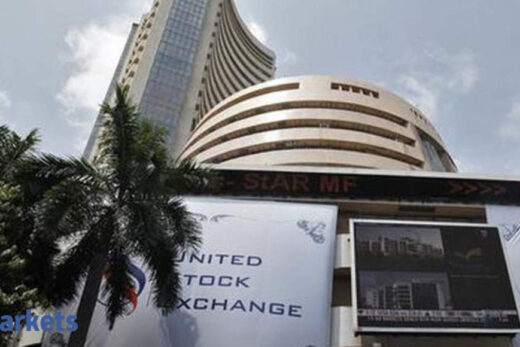Indian markets have done well for themselves this year and if I look at the emerging market basket, we are the second best performing market this year after UAE. What does that mean for you and your fund? Are the Indian markets looking stretched or is this the beginning of a long-term trend?
It is difficult to extrapolate what you see in the markets within India. There is a lot of volatility in the market and over the last six-seven quarters, markets have bounced a lot faster and longer than we expect it to. Given the volatility in the region, not just in India, I would be cautious about extrapolating India’s performance from here on.
We need to be reasonably cautious but there are some structural shifts that give us good potential for sustained growth in the Indian markets as well. There are some silver linings in the Indian market. I would trade carefully going forward, extrapolating numbers from here.
When you say structural shift, are you referring to the structural shift which has happened in IT or the structural shift which is now happening as far as the cyclical stocks and the capex dominated economy is concerned?
There are two-three clusters of interesting stocks that are doing quite well at this point in time. When I talk about structural shift, the one that came to my mind was the recent flurry of public offerings that are coming from the online space, where after quite a long period, we have had quite a few private companies with interesting business models going public.
They are predictors of the shift of consumer behaviour from the offline space to online ordering of products and services. We had seen a sudden level of maturity scale and some of these offerings like Zomato are the structural shifts that are interesting. They are not necessarily cheap when you look at valuations but there are real and interesting shifts in the way the market is evolving in India. However, these are not the only ideas out there. There are some recovery plays as well. We are also into discretionary plays like real estate that also seen a flurry of enthusiasm in the Indian market recently.
You have been a long-term investor in Indian private banks.But we are getting signs of stress, especially on the retail book in banks like HDFC Bank, Kotak Bank or . Can one ignore the uptick the banks have reported last quarter especially on the retail book?
Yes, we have held three financial holdings over the last two-three years within the financial space and that would be HDFC, HDFC Bank and
. Yes, there are some signs of stress. I think these are real. The regulatory environment and the banking environment has been supportive enough to make sure that some of these stress lines are mitigated and there is enough liquidity in the system.
But some of the stress is real and it depends on how the signs and the post Covid recovery look like. That introduces quite a bit of uncertainty in the pace of recovery from severe Covid and that is something that any portfolio needs to adjust for as well.
These banks have a lot of qualities that we like longer term and even in the medium term, in the next year and a half, two years. The common factors include strong distribution networks, very very professional management teams and credit controls that are as good as they come, not just in India but in the region as well. These are real qualities that one likes to have in financial institutions. But they are not for everybody. If people are looking for one-month or two-week plays, it may not be something that fructify within that short timeframe. But if we have a longer term timeframe and are interested in buying good quality businesses with access to underlying sustained growth over the longer term, those would be the three stocks one will consider seriously.
Why do you like Bharti Airtel? The telecom sector is definitely grappling with a lot of AGR dues and there is a tussle between the department of telecom, the government and the incumbents.
If you look at the news flow and the pressure in the market as well as the loss of value in the telecom sector, it is something that we struggle with as well. Telcos in India over the last few years have gone through a difficult time and we have seen various amounts of value destruction, pretty strong volatility from the operating environment and a lot of uncertainty as well.
Over the last five, six quarters we have seen that the worst seems to be over in terms of market aggression and there is steady form of market repair and a more rational telecom market. Among the three that we could buy, we prefer Bharti. We like its management team, its strategy, its focus and its ability to execute. We also like the quality of its customer base and the fact that it has pricing power and offers good value for money for what it does and the quality of its reception and coverage.
We like all those things about the company but we remain cautious about the sector. The sector is a difficult one to anticipate, not just in India but in the region as well where there is quite a lot of regulatory intervention and the ecosystem is always evolving in almost every market. In 10 years, the number of players have rationalised. If you look at 20 years, the number of players should have increased and it is an environment where one has a measured and cautious approach. Among the three, Bharti has the best risk return balance.
You alluded to the fact that the recent flurry of internet IPOs are an indication of a structural shift. Zomato and PolicyBazaar have recently listed, It is a strong line up of internet companies which are slated to have IPOs this year. In your experience, are valuations a fair parameter to judge these companies?
Valuations are always a concern to us but depending on the business model and the lifecycle and the sector, we need to adjust for which methodologies work the best for the ideas that we are exploring. All the names that you mentioned are very strong names within the internet space and the internet ecosystem. We are trying to keep up with what is happening in a very dynamic space but those names that you mentioned have distinguished themselves from their peer group and some are already in the market.
When it comes down to valuations, it is a very tricky call. Often it is a sign of maturity of the capital markets that it expects a certain groups of IPO ideas like this where we do not really have a strong or long track record of earnings yet. One needs to weigh the strength of each stock on the basis of its ability to execute in the future and its ability to try and sustain underlying levels of growth that are reasonably high. There we look at different types of methodologies. Instead of looking at earnings multiples or EBIT multiples, we tend to look at revenue multiples, we tend to look out to the future more than you look to the present level of cash flows and earnings. That is something that we need to get reasonably comfortable with.
When we do this and look at earnings multiples that are applied in more traditional business models, we will not get a similar level of comfort for valuations. It is always a lot more challenging when you do not have a base level of earnings to bank on and when you are looking at future growth. Here we need to press the hypothesis more rigorously. We need to form our own opinions and then we need to make sure that although we get some exposure — stocks like Zomato until they generate earnings and good cash flows over a steady period of time and valuations measured, are not going to be 8-9% of our portfolio anytime soon.
So there are various ways to manage that risk but structurally, these are interesting ideas that will become increasingly dominant. At this point in time, these ideas are collectively less than 5% of any kind of benchmark to look at in India but in the next five, 10 years who is to say they would not be 15-20% of the benchmark and a very large part of the capital markets? We cannot ignore these things but one needs to be very selective.



